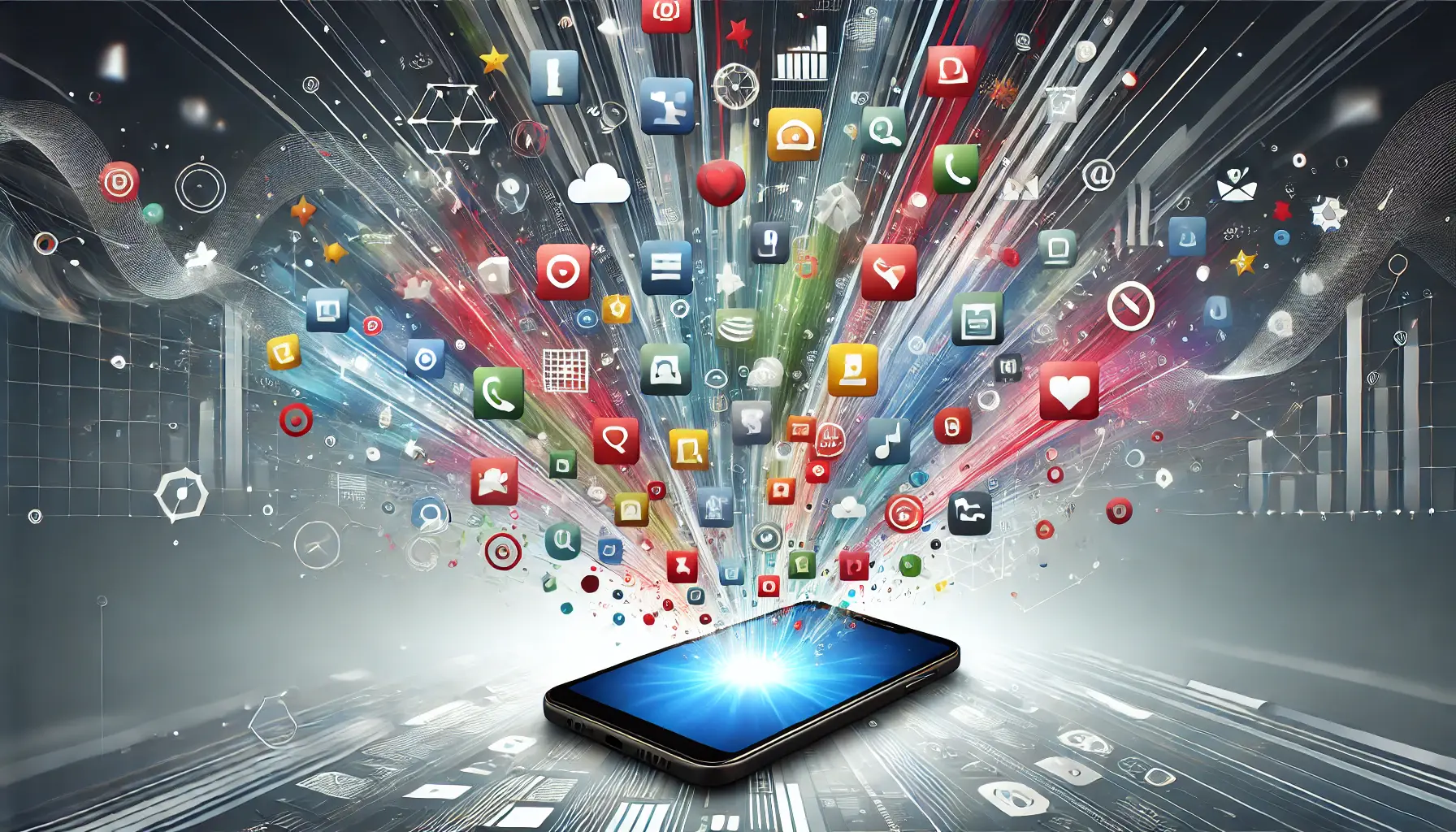Welcome to the thrilling realm of metaverseA virtual, immersive digital environment where users interact using avatars. brand activations!
As digital worlds evolve, brands are finding innovative means to engage with consumers within virtual environments.
Let us explore what metaverse brand activations are and how they are reshaping the marketing landscape.
- Understanding Metaverse Brand Activations
- Strategies for Effective Metaverse Marketing
- Case Studies of Effective Metaverse Brand Activations
- Blending Social Media Advertising with Metaverse Brand Activations
- Future Metaverse Brand Activations Trends
- Key Takeaways on Metaverse Brand Activations
- Frequently Asked Questions Regarding Metaverse Brand Activations
Understanding Metaverse Brand Activations
Metaverse brand activations are all about creating immersive and interactive experiences within virtual worlds to connect with consumers.
These activations allow brands to engage audiences in new, meaningful ways and deepen brand loyalty.
How Brands Use the Metaverse for Activations
Brands are leveraging the power of the metaverse to offer unforgettable experiences.
Some common strategies include:
- Host Virtual Events: Brands can organize concerts, fashion shows, or product launches that customers can attend from anywhere in the world.
- Construct Virtual Stores: Companies are building virtual storefronts where users can browse and purchase goods in a 3D environment, offering an engaging and interactive shopping experience.
- Develop Branded Content: Many brands create games, experiences, or stories that incorporate brand content, providing entertainment while subtly promoting products or services.
These approaches not only boost consumer engagement but also generate new revenue streams and advertising opportunities for brands willing to explore the metaverse.
With each passing day, metaverse brand activations become more sophisticated, offering endless possibilities for companies to stand out.
As we delve further into the evolution of marketing within virtual spaces, you’ll see how these activations have developed over time and what exciting opportunities the future holds for brands in the metaverse.
Metaverse brand activations provide brands with a unique opportunity to engage with audiences in immersive virtual environments, enhancing brand loyalty and visibility.
Strategies for Effective Metaverse Marketing
As the metaverse expands, brands are developing innovative ways of engaging consumers in these interactive virtual environments.
To engage consumers meaningfully and enhance brand visibility, consider the following metaverse brand activation strategies.
Creating Immersive Virtual Experiences
Immersive experiences define metaverse brand activations.
By building virtual interactive spaces, brands can offer consumers unique experiences that go beyond traditional advertising.
For instance, luxury fashion brands like Gucci have developed virtual spaces where consumers can explore virtual showrooms and shop for digital clothes, amplifying brand visibility and consumer engagement.
Using NFTs and Digital Collectibles
Non-fungible tokens (NFTsNon-fungible tokens, unique digital assets verified using blockchain technology.) and digital collectiblesUnique digital items that can be bought, sold, or traded, often tied to blockchain-based NFTs. provide brands with an opportunity to offer exclusive virtual items, enhancing customer engagement and loyalty.
Through metaverse brand activations, brands can create limited-edition digital items, providing consumers with a sense of ownership and commitment.
This not only opens up new revenue streams but also strengthens brand identity within the metaverse.
Collaboration with Virtual Platforms and Influencers
Working with established virtual platforms and digital influencers can significantly enhance a brand’s presence in the metaverse.
Collaborations with popular virtual influencers or participation in virtual events allow brands to connect with new communities and form authentic relationships in the virtual world.
Through these effective strategies, brands can maximize their presence in the metaverse, establishing genuine connections and building lasting relationships with consumers in this ever-evolving digital landscape.
Implementing creative strategies like virtual stores, NFTs, and influencer partnerships can maximize brand impact in the metaverse.
Case Studies of Effective Metaverse Brand Activations
Looking at real-life examples of effective metaverse brand activations can provide valuable insights into how companies are leveraging virtual worlds to connect with consumers.
Let’s examine some fascinating case studies that reflect innovative strategies and their effects.
Gucci’s Virtual Collaboration and Digital Fashion Initiatives
Gucci has been leading the way in integrating luxury fashion into the metaverse.
Their initiatives include:
- Gucci Garden in Roblox: A virtual experience where users could discover themed rooms and purchase limited-edition virtual items. This activation enhanced brand visibility among younger audiences and demonstrated the potential for selling virtual goods.
- Virtual Sneakers: Gucci released virtual-only sneakers that customers could ‘wear’ in augmented reality (AR) and supporting apps. This initiative capitalized on the growing interest in digital fashion and collectibles.
These actions place Gucci at the forefront of digital fashion, linking traditional luxury with innovative virtual experiences.
Versace’s Integration with Fortnite and Snapchat
Versace expanded its presence in the metaverse by collaborating with popular platforms to extend their brand reach:
- Fortnite Collaboration: Versace introduced virtual accessories and fashion items in the Fortnite gaming platform, allowing players to customize their avatars with branded clothing. This campaign engaged the gaming community and increased brand awareness.
- Snapchat AR Filters: Using Snapchat’s augmented reality features, Versace created filters that enabled users to virtually try on products, enhancing user engagement and providing an immersive shopping experience.
By integrating with such platforms, VersaceA high-end fashion brand that has embraced digital experiences through collaborations with virtual platforms. effectively bridged the gap between fashion and digital entertainment, engaging consumers in new and interactive ways.
Burberry’s Use of Augmented Reality for Product Interaction
Burberry utilized ARAbbreviation for Augmented Reality, enhancing real-world experiences with digital content. technology to enhance customer interaction with their products:
- AR Shopping Tools: Burberry incorporated AR features into their mobile app, allowing users to visualize products in their own space before making a purchase. This improved the shopping experience and reduced return rates.
- Interactive Campaigns: The company launched AR campaigns that enabled users to scan specific products or in-store installations to unlock exclusive content and experiences, leading to increased brand engagement and loyalty.
Burberry’s adoption of AR technologies is a prime example of how traditional retailing can be reimagined through digital innovation, creating a more interactive and personalized consumer experience.
These case studies demonstrate the diverse ways brands can activate their presence in the metaverse, from digital partnerships and virtual fashion to augmented realityTechnology that overlays digital elements onto the real world using devices like smartphones or AR glasses. experiences.
By adopting these strategies, companies can establish interactive connections and build lasting relationships with consumers in the evolving digital world.
Successful activations like Gucci’s virtual collaborations and BurberryA luxury fashion brand known for its use of technology in retail and immersive digital experiences.‘s AR experiences exemplify how brands can create meaningful connections with their audiences in the metaverse.
Blending Social Media Advertising with Metaverse Brand Activations
As the digital landscape evolves, blending social media advertising with metaverse brand activations offers brands new ways to engage with consumers.
When these two platforms are combined, companies can create compelling experiences that connect with customers in ways previously unimaginable.
Cross-Promotion of Virtual Events on Social Spaces
Cross-promoting virtual events happening in the metaverse through social media can significantly boost visibility and engagement.
Brands can:
- Leverage Influencers: Collaborate with social media influencers to spread event news, generating buzz and increasing attendance.
- Use Targeted Ads: Implement targeted advertising to reach specific audiences, ensuring the event reaches its intended viewers.
- Use Interactive Content: Share teasers, behind-the-scenes footage, and interactive posts to generate anticipation and excitement.
These strategies not only drive users to virtual experiences but also foster a sense of community and excitement around the brand’s metaverse brand activations.
Using Augmented Reality Filters in Social Media Campaigns
Augmented Reality (AR) filters provide an interactive and enjoyable way for users to engage with branded content on social media.
Brands can:
- Enhance Product Trials: Allow users to virtually try on products like apparel or accessories, bridging the gap between online shopping and real-world experience.
- Encourage User-Generated Content: Inspire users to share their experiences using AR filters, extending the brand’s reach and building authenticity.
- Integrate with Metaverse Avatars: Enable users to personalize their metaverse avatars with branded virtual products, creating a consistent brand presence across platforms.
Using AR filters not only enhances the user experience but also creates a seamless connection between social media engagement and metaverse brand activations.
Boosting User Engagement Through Virtual Challenges and Competitions
Holding virtual competitions and challenges within the metaverse, promoted through social media, can significantly boost user engagement and brand interaction.
Brands can:
- Design Metaverse-Inspired Competitions: Create challenges that invite users to explore virtual brand spaces, complete tasks, or showcase creativity using branded virtual items.
- Offer Exclusive Incentives: Reward winners with exclusive virtual goods, NFTs, or real-world prizes to encourage participation and build brand loyalty.
- Feature User Achievements: Showcase participant contributions and achievements on social media, fostering community spirit and motivating others to join.
These activities not only drive active participation but also create a stronger connection between the brand’s social media presence and its metaverse brand activations.
By integrating social media marketing and metaverse brand experiences, companies can create harmonious, interactive experiences that captivate and retain their audiences across multiple digital platforms.
Cross-promoting metaverse events through social media and leveraging AR filters enhances user engagement and brand reach.
Future Metaverse Brand Activations Trends
As the metaverse continues to expand, brands are exploring innovative ways to interact with consumers in virtual environments.
Staying at the forefront of these trends is essential for companies seeking to remain competitive and build stronger connections with their audiences through metaverse brand activations.
Adopting Artificial Intelligence and Personalization
Artificial Intelligence (AIArtificial Intelligence, the simulation of human intelligence in machines that perform tasks like analysis, automation, and personalization.) is becoming a foundation for creating personalized experiences in the metaverse.
Brands can monitor user behavior and preferences to customize interactions using AI, resulting in more interactive and tailored experiences.
For example, AI-driven virtual assistants can guide users through virtual shopping malls, suggesting products based on previous interactions, enhancing customer satisfaction and loyalty.
Integration of Digital Product Passports (DPPs)
Digital Product Passports (DPPs) are emerging as a key tool for brands seeking to provide transparency and authenticity in the metaverse.
These passports contain detailed information about a product’s origin, materials, and lifecycle, accessible to consumers through digital channels.
DPPs not only build consumer trust but also align with the increasing demand for sustainability and ethical sourcing in virtual retail spaces.
Virtual Fashion and Digital Collectibles Growth
The digital fashion industry is rapidly growing, with fashion companies designing virtual clothing and accessories for avatarsDigital representations of users in virtual spaces, often customizable..
This trend provides new revenue streams and allows consumers to express their individuality in digital spaces.
Collaborations between fashion brands and tech companies are resulting in personalized digital collectibles, further enhancing brand visibility and consumer engagement within metaverse brand activations.
Enhanced Social Interaction through Virtual Events
Virtual events are becoming more immersive and sophisticated, offering experiences comparable to in-person events.
Brands are now hosting concerts, fashion weeks, and product launches within the metaverse, removing geographical limitations and encouraging global participation.
These events foster community building and create exclusive opportunities for consumer interaction.
By embracing these trends, brands can craft impactful metaverse brand activations that resonate with consumers, build loyalty, and drive innovation in the digital landscape.
Staying ahead of trends like AI-powered personalization, digital product passportsDigital certificates containing detailed information about a product's origin, materials, and lifecycle., and virtual fashion will be crucial for brands seeking competitive advantage in the metaverse.
Key Takeaways on Metaverse Brand Activations
Metaverse brand activations are revolutionizing how companies connect with consumers, enabling them to create captivating experiences that bridge the physical and digital realms.
By embracing innovative strategies, brands can leave lasting impressions, build stronger brand loyalty, and explore new revenue streams.
The Power of Immersive Experiences
Creating immersive virtual experiences helps brands establish meaningful connections with consumers.
From interactive product launches to branded digital worlds, companies can engage their audience in visually stimulating and dynamic environments.
This personalized experience enhances brand presence and fosters long-term consumer relationships.
Utilizing NFTs and Digital Collectibles
The integration of NFTs and digital collectibles enables brands to engage consumers in new and innovative ways.
By offering limited-edition digital assets, companies create exclusivity, foster brand loyalty, and generate buzz in the virtual space.
As digital ownership continues to grow, brands adopting this trend will gain a significant competitive advantage.
Social Media Synergy with the Metaverse
Combining social media marketing with metaverse brand activations amplifies brand visibility.
Companies can use targeted advertisements, engaging content, and influencer partnerships to drive traffic to their virtual events and branded experiences.
Cross-promoting on social media platforms expands brand reach and enhances consumer interaction.
Establishing Consumer Trust through Digital Product Passports
Digital Product Passports (DPPs) are changing how consumers interact with brands in the metaverse.
These passports provide transparent information on product origin, sustainability, and lifecycle, helping consumers make informed choices.
Brands that embrace DPPs can position themselves as leaders in responsible and transparent business practices.
The Rise of Virtual Fashion and Immersive Events
Luxury brands and fashion labels are at the forefront of virtual fashion, creating digital apparel for avatars and hosting immersive events.
Consumers can attend virtual fashion shows, purchase exclusive digital clothing, and participate in branded virtual experiences.
This technological advancement deepens consumer engagement and positions brands as innovators in digital fashion.
What the Future Holds
The future of metaverse brand activations offers limitless opportunities.
From AI-driven personalization to the continued evolution of AR and VRAbbreviation for Virtual Reality, offering immersive digital experiences. experiences, brands will find new ways to engage consumers.
Companies that stay ahead of these advancements will lead the rapidly evolving digital landscape.
Incorporating metaverse brand activations into your marketing strategy not only elevates brand visibility but also enhances customer relationships.
Through virtual experiences, NFTs, social media campaigns, and interactive events, brands can build genuine connections that resonate with consumers for years to come.
Embracing immersive experiences, NFTs, and social media synergy can drive brand loyalty and create memorable consumer interactions in virtual spaces.
Enjoyed the article? Let its author handle your social media ads. Visit our service page to get started!
Frequently Asked Questions Regarding Metaverse Brand Activations
As brands enter the metaverse, some common questions arise about successful approaches and benefits.
Below are some of the most frequently asked questions to help navigate this evolving landscape.
Metaverse brand activations refer to creating interactive, immersive experiences in virtual environments to engage consumers and enhance brand visibility.
Brands benefit by reaching new consumers, creating meaningful interactions, and showcasing innovation through virtual experiences that go beyond traditional marketing efforts.
Key technologies include virtual realityA fully immersive digital environment experienced using VR headsets. (VR), augmented reality (AR), blockchainA decentralized digital ledger used to record transactions securely. for NFTs, and AI-driven personalization, all contributing to engaging metaverse brand activations.
Yes, small businesses can enter the metaverse by collaborating with established platforms, setting up virtual shops, or developing unique digital products tailored to their audience.
NFTs provide exclusive, collectible digital assets that enhance metaverse brand activations by increasing consumer engagement, generating buzz, and creating new revenue streams.
Challenges include high development costs, maintaining user privacy and security, and ensuring that experiences are meaningful and resonate with target audiences.
Success is measured through user engagement, time spent in virtual environments, social media presence, and the direct impact on sales and brand perception.
While they are most common in the tech and gaming sectors, metaverse brand activations can benefit various industries by tailoring experiences to fit their brand identity and audience preferences.
Social media acts as a bridge, generating buzz for virtual experiences, facilitating community discussions, and driving traffic to metaverse brand activations.










